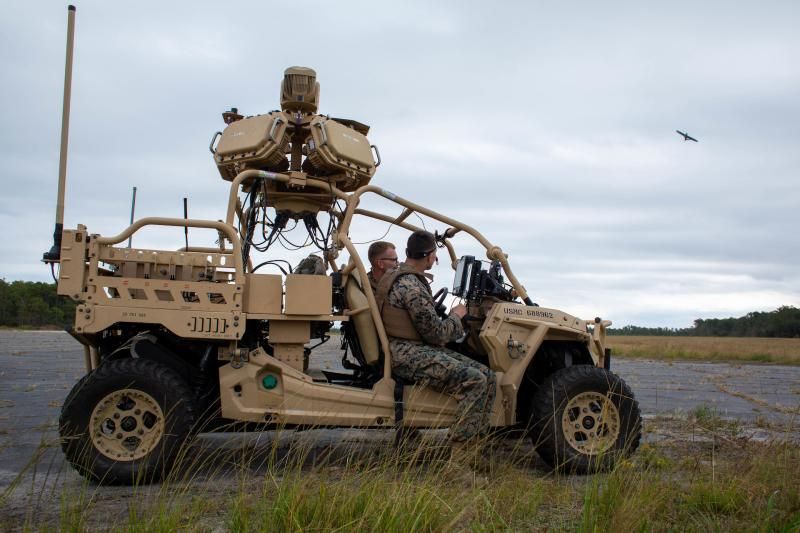A request for proposals for MADIS Increment 1, Block 2 is tentatively scheduled to be released in late fourth quarter fiscal 2023 or early first quarter fiscal 2024, according to a social media post, and reported in Army Recognition.
The Marine Corps is preparing to release a request for proposals for the next iteration of its Marine Air Defense Integrated System (MADIS) with the hopes of acquiring new “non-kinetic” weapons that can take out enemy unmanned aerial systems and other threats.
In US military terminology, the “kinetic” descriptor typically refers to projectiles and missiles, while “non-kinetic” weapons include directed energy, electronic attack, or cyber tools.
The MADIS family of systems will provide Marine littoral regiments, Marine expeditionary units and other deployable Marine Air Ground Task Force elements with “an organic, mobile, 360-degree expeditionary, upgradable, and state of the art fully integrated Short Range Air Defense (SHORAD) capability” to defend against small drones, fixed-wing and rotary-wing aircraft while maintaining pace with maneuver forces, according to Defense Department budget documents.
According to a separate post, US Marines anticipate full-scale production of the Marine Air Defense Integrated System (MADIS) Remote Weapon Station (RWS). This system plays a crucial role in the Marine Corps ground-based air defense portfolio and has reached a significant milestone by transitioning to full-scale production. Manufactured and managed by Kongsberg at its Johnstown facility, the MADIS RWS enhances protection against drones and increases lethality against evolving threats.
The MADIS RWS, equipped with Kongsberg’s RS6 RWS, includes a percussion-primed XM914E1 30mm x 113mm cannon with a coaxial M240C (7.62mm) machine gun, an integration kit for the STINGER Air-To-Air Launcher (ATAL), and provisions for future counter-drone (C-UAS) systems. As part of the Marine Corps’ plan to modernize its two low-altitude air defense (LAAD) battalions, the MADIS RWS is the first 30mm remote weapon system qualified on the Joint Light Tactical Vehicle platform (JLTV). It is mounted on JLTVs and operates in pairs designated as Mk1 and Mk2. The MADIS Mk1 is equipped with STINGER missiles and neutralizes fixed-wing and rotary-wing aircraft, while the Mk2 fulfills the C-UAS mission, while also providing radar and command-and-control capabilities for the pair.
In September 2021, the US Marines awarded Kongsberg a five-year production contract with an Other Transaction Authority (OTA), valued at up to USD94 million. This contract includes a series of Low-Rate Initial Production (LRIP) systems, full-scale production units, spare parts, and training. It follows a previous OTA contract awarded to Kongsberg in September 2020 for test articles and activities, including Design Verification Testing (DVT), after a competitive process.
The MADIS RWS by Kongsberg leverages technology and expertise from various counter-drone (C-UAS) and air defense programs. The system shares similarities with the PROTECTOR RWS family, which has been delivered and deployed by the US Army and Marine Corps.
Kongsberg is the leading manufacturer of RWS, having delivered over 20,000 units to more than 20 countries worldwide. Additionally, Kongsberg is the sole provider of RWS and remote turrets to the US Army and Marine Corps. All RWS and remote turrets supplied to US customers are manufactured at Kongsberg’s facility in Johnstown, relying on a vast American supply base.
More information here




